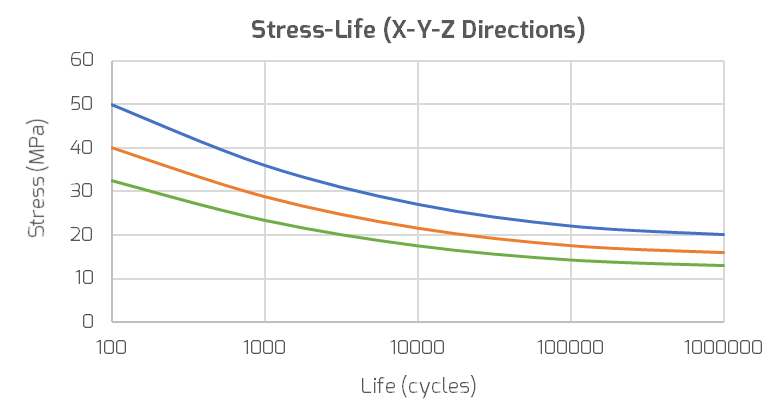Design for Additive Manufacturing
Handling Anisotropy in Additive Manufactured
/ 3D Printed Components

Advances in process and materials have launched a revolution in additive manufacturing. This has broken the link between design complexity and manufacturing cost, opening new possibilities in geometric freedom. Once considered only for visualisation and prototyping, additive manufacturing is now practicable for structures in safety critical applications such as aerospace.
However, from a structural viewpoint, additive manufactured materials do not behave the same as their machined billet or cast counterparts. Even for an identical alloy, the manufacturing process weakens the structure in certain directions. Engenuity’s testing and analysis approach not only avoids in service failures but also optimises designs to make the most of the new possibilities in 3D printing.
Contact us to learn more Contact Form | +44 1444 457257 | enquiry@engenuity.net
ARE ADDITIVE MANUFACTURED PARTS ANISOTROPIC?
It is common for additive manufactured parts to show anisotropy in all mechanical properties, including strength, stiffness and fatigue life. This is caused by the intrinsic directionality of AM processes. When setting up parts for manufacture, often the designer will choose to orientate the parts to fit the most on a single run, or for surface finish. However, this orientation is critical to the structural performance of the design and should be considered from the concept stage of design development.
The graph below shows that under a moderate 20MPa cyclic stress, the part will handle 1,000,000 cycles in the X direction but only 3,500 cycles in Z. Without considering the anisotropy as part of the design process the part will either fail early or weigh more than is required for the application.


ENGINEERING DEVELOPMENT FOR ADDITIVE MANUFACTURING
It all starts with material characterisation at Engenuity’s on-site test lab. We test the 3 orthogonal axes, plus other angles to check our assumptions. Tests are repeated to ensure the validity of the results. This data is input into material cards for analysis software. During the analysis development we align the critical load paths with the strongest axis of the material and explore different concepts to realise the optimal geometry. The process is completed with a verification step – new parts are printed and go back to the test lab for component level testing.

Engenuity offers support for all stages of the design development process for additive manufactured parts. Including material selection and characterisation, producing the materials cards for analysis and component optimisation with our experienced team of engineers.
Contact us now and learn how we can help you improve your components and structures
Contact us to learn more Contact Form | +44 1444 457257 | enquiry@engenuity.net
